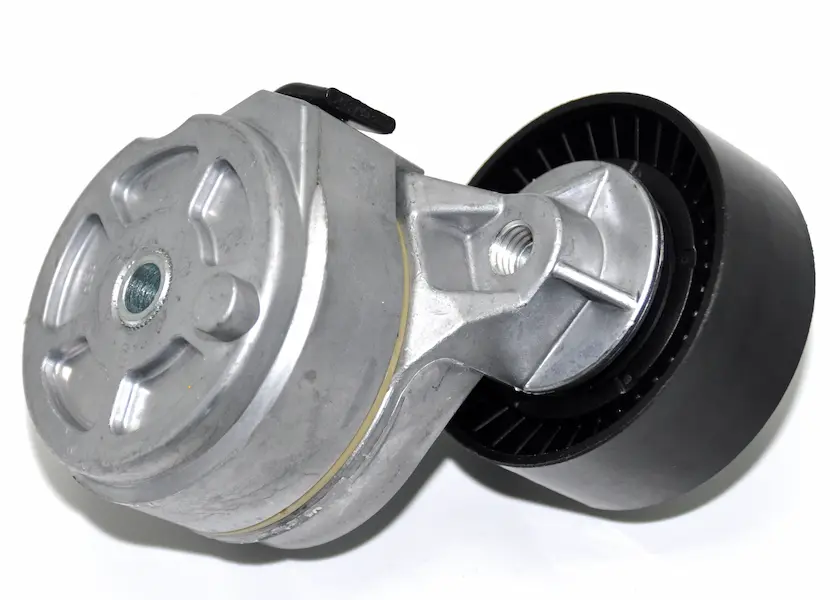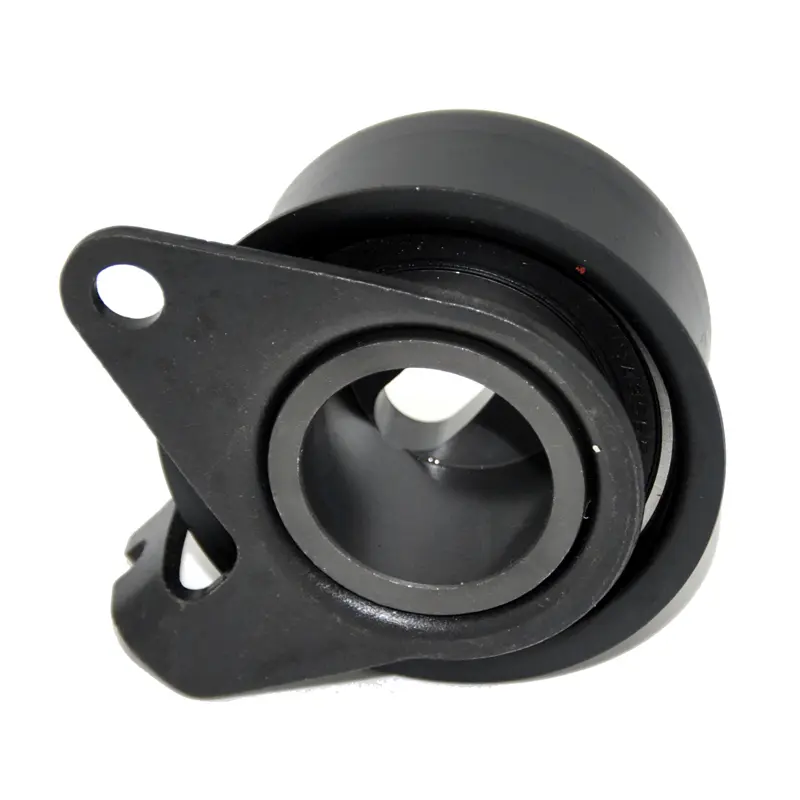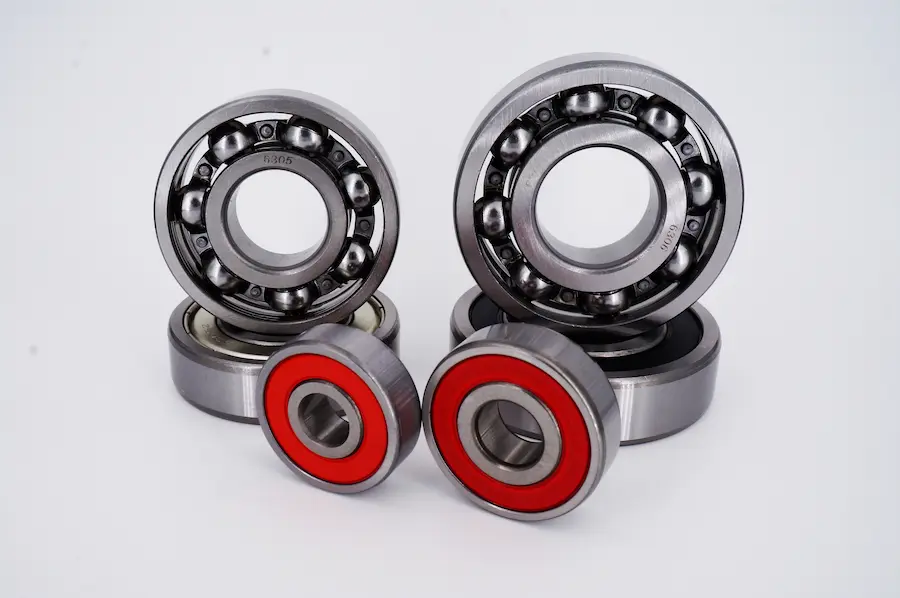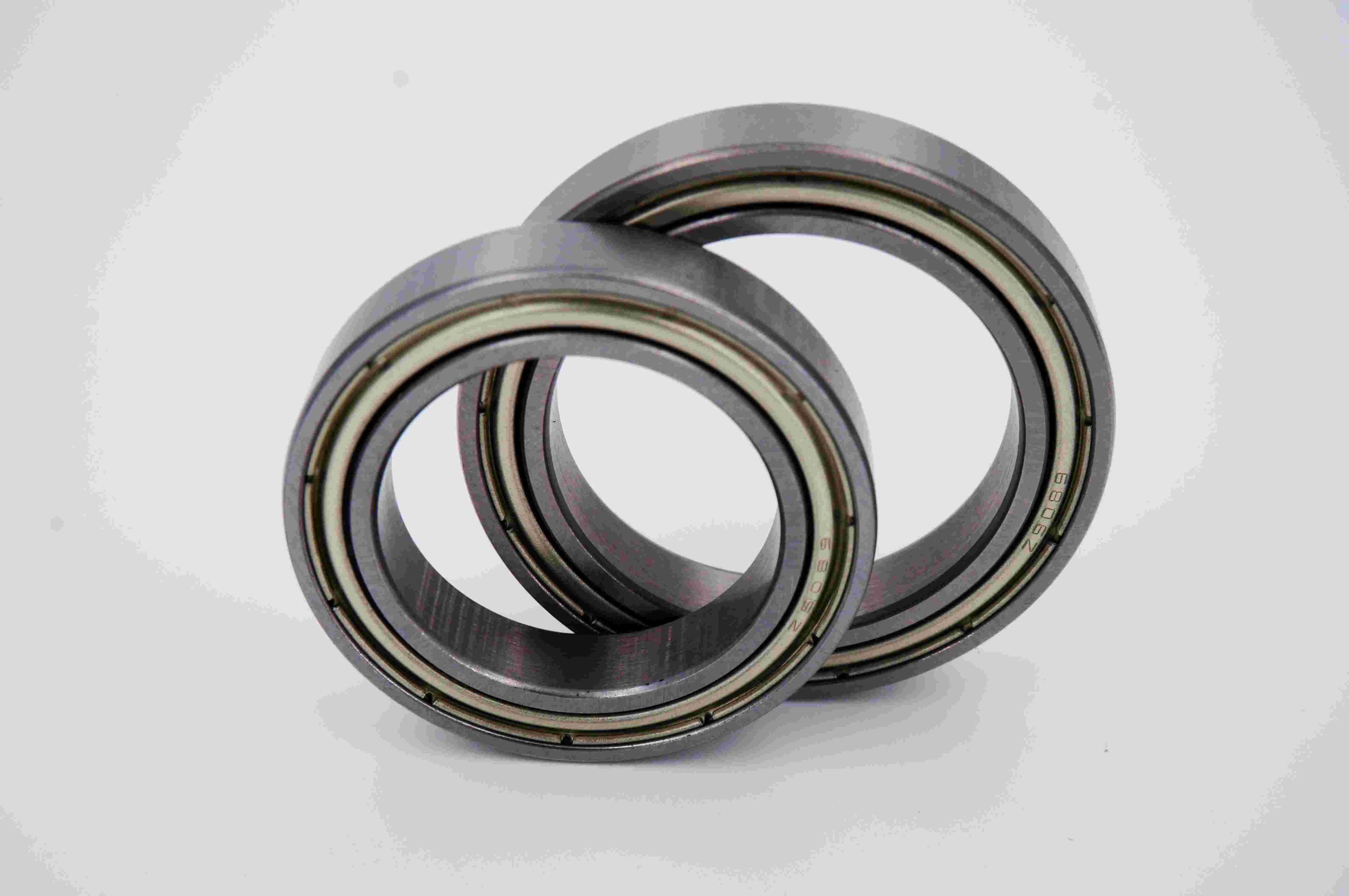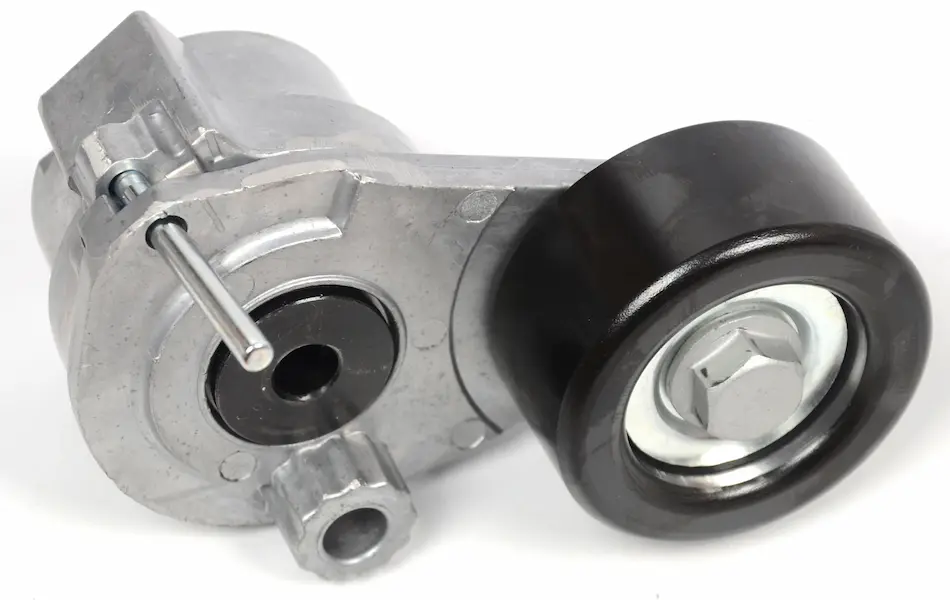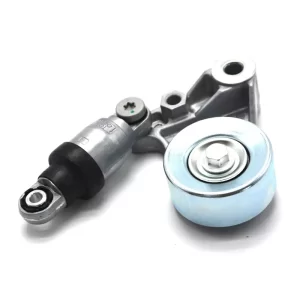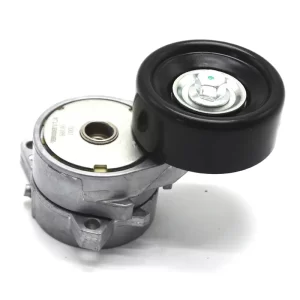Στα πλαίσια της αυτοκινητοβιομηχανίας, ο τεντωτήρας είναι ένας μηχανισμός που έχει σχεδιαστεί για να ρυθμίζει και να διατηρεί τη σωστή τάση ενός ιμάντα, μιας αλυσίδας ή ενός παρόμοιου εύκαμπτου εξαρτήματος. Ο πρωταρχικός του ρόλος είναι να διασφαλίζει ότι ο ιμάντας ή η αλυσίδα παραμένει σφιγμένη και σωστά ευθυγραμμισμένη, γεγονός που είναι κρίσιμο για τη βελτιστοποίηση της απόδοσης και της μακροζωίας διαφόρων συστημάτων.
Αντίθετα, οι τροχαλίες αδράνειας χρησιμοποιούνται για να κατευθύνουν και να διατηρούν τη σωστή τάση στους ιμάντες κίνησης των εξαρτημάτων του κινητήρα. Καθοδηγώντας αυτούς τους ιμάντες και διατηρώντας τη σωστή τάση, οι τροχαλίες αδράνειας διευκολύνουν την ομαλή λειτουργία του συστήματος κίνησης εξαρτημάτων του κινητήρα. Αυτή η λειτουργία βοηθά στη μείωση του θορύβου και των κραδασμών, γεγονός που συμβάλλει σε μια πιο εκλεπτυσμένη εμπειρία οδήγησης.
Τροχαλίες τεντωτήρα και τροχαλίες Idler Premium για γαλλικά μοντέλα αυτοκινήτων: Peugeot, Citroen και Fiat
Εισαγωγή
Η απόδοση και η διάρκεια ζωής του συστήματος μετάδοσης κίνησης ιμάντα ενός οχήματος επηρεάζεται σημαντικά από την ποιότητα του εντατήρα και των τροχαλιών αδρανείας. Στη Vankv, έχουμε δεσμευτεί να παρέχουμε τροχαλίες υψηλής ποιότητας ειδικά σχεδιασμένες για γαλλικά μοντέλα αυτοκινήτων, όπως Peugeot, Citroen και Fiat. Η αφοσίωσή μας στην ακρίβεια και στις προηγμένες τεχνικές κατασκευής διασφαλίζει ότι κάθε τροχαλία πληροί αυστηρά πρότυπα απόδοσης και αντοχής.
Κατανόηση των τροχαλιών τεντωτήρα και τροχαλιών τροχαλίας
Η τροχαλία τάνυσης είναι ένα βασικό εξάρτημα που διατηρεί την κατάλληλη τάση στους ιμάντες κίνησης του κινητήρα. Προσαρμόζεται αυτόματα στις μεταβολές της τάσης του ιμάντα, διασφαλίζοντας ότι ο ιμάντας παραμένει σφιχτός και σωστά ευθυγραμμισμένος. Αυτό είναι ζωτικής σημασίας για την ομαλή λειτουργία των εξαρτημάτων του κινητήρα, όπως η γεννήτρια, η αντλία νερού και η αντλία υδραυλικού τιμονιού. Αποτρέποντας την ολίσθηση, η τροχαλία τεντωτήρα συμβάλλει στην επίτευξη της βέλτιστης απόδοσης του κινητήρα.
Οι τροχαλίες περιστροφής, από την άλλη πλευρά, παίζουν καθοριστικό ρόλο στην καθοδήγηση του ιμάντα κίνησης γύρω από τα εξαρτήματα του κινητήρα. Εξασφαλίζουν ότι ο ιμάντας παραμένει ευθυγραμμισμένος και διατηρεί τη σωστή τάση. Στηρίζοντας και κατευθύνοντας τον ιμάντα, οι τροχαλίες αδράνειας μειώνουν τις τριβές και τη φθορά, συμβάλλοντας στην ομαλότερη λειτουργία του κινητήρα. Αυτό όχι μόνο ελαχιστοποιεί το θόρυβο και τους κραδασμούς, αλλά βελτιώνει και τη συνολική οδηγική εμπειρία.
Συνολικά, οι premium τροχαλίες τεντωτήρα και αδρανείας μας έχουν σχεδιαστεί για να καλύπτουν τις ειδικές ανάγκες των γαλλικών μοντέλων αυτοκινήτων, παρέχοντας αξιόπιστες επιδόσεις και μακροζωία.
Βασικά στοιχεία
Τροχαλία τεντωτήρα:
- Τροχός τροχαλίας: Κατασκευασμένοι από πολυμερή υψηλής αντοχής ή ενισχυμένο χάλυβα, οι τροχοί τροχαλίας μας προσφέρουν εξαιρετική αντοχή και αντίσταση στη φθορά, ικανή να αντέχει στις μηχανικές καταπονήσεις.
- Φέρει: Χρησιμοποιούμε υψηλής ποιότητας σφραγισμένα ρουλεμάν για να διασφαλίσουμε την ομαλή λειτουργία και την προστασία από τους ρύπους, γεγονός που συμβάλλει στη διατήρηση της μακροχρόνιας απόδοσης.
- Άνοιγμα τάσης: Αυτός ο στιβαρός μηχανισμός με ελατήριο εξασφαλίζει τη σωστή τάση στον ιμάντα κίνησης. Προσαρμόζεται στις αλλαγές στην τάνυση του ιμάντα και στους κραδασμούς του κινητήρα, διατηρώντας σταθερή απόδοση.
- Βάση στήριξης: Τα κατασκευασμένα με ακρίβεια στηρίγματά μας καθιστούν την εγκατάσταση εύκολη και ασφαλή, εξασφαλίζοντας σταθερή σύνδεση με το μπλοκ του κινητήρα.
Τροχαλία τροχαλίας:
- Τροχός τροχαλίας: Κατασκευασμένες από ανθεκτικά υλικά, όπως ενισχυμένο χάλυβα ή πολυμερή υψηλής αντοχής, οι τροχαλίες μας είναι κατασκευασμένες για να αντέχουν τις καταπονήσεις της καθημερινής οδήγησης.
- Φέρει: Εξοπλισμένες με σφραγισμένα ρουλεμάν, αυτές οι τροχαλίες προσφέρουν ομαλή λειτουργία και μακροχρόνια αξιοπιστία.
- Διαχωριστικό/υαλοκαθαριστήρας: Αυτό εξασφαλίζει τη σωστή ευθυγράμμιση και απόσταση της τροχαλίας στο βραχίονα στήριξης, η οποία είναι ζωτικής σημασίας για τη λειτουργία της.
- Βάση στήριξης: Το στήριγμα παρέχει ένα σταθερό και ασφαλές σημείο τοποθέτησης για την τροχαλία αδρανείας, εξασφαλίζοντας τη σωστή τοποθέτησή της.
Η κατανόηση του τρόπου λειτουργίας των τροχαλιών τάνυσης και των τροχαλιών αδρανείας είναι απαραίτητη για την αποτελεσματική συντήρηση του συστήματος ιμάντων κίνησης ενός οχήματος. Η τροχαλία τεντωτήρα διαδραματίζει κρίσιμο ρόλο εφαρμόζοντας μια ελεγχόμενη δύναμη για τη διατήρηση της απαραίτητης τάσης του ιμάντα. Αυτό το εξάρτημα διαθέτει ένα ελατήριο τάνυσης που προσαρμόζεται στο τέντωμα του ιμάντα και στους κραδασμούς του κινητήρα, εξασφαλίζοντας ότι ο ιμάντας παραμένει σωστά τεντωμένος και αποτρέπει την ολίσθηση. Η σωστή τάνυση είναι ζωτικής σημασίας για την αποτελεσματική μετάδοση της ισχύος εντός του κινητήρα, επιτρέποντας σε όλα τα εξαρτήματα του κινητήρα να λειτουργούν βέλτιστα.
Από την άλλη πλευρά, η τροχαλία αδράνειας στηρίζει και κατευθύνει τον ιμάντα κίνησης, οδηγώντας τον ομαλά πάνω από τα εξαρτήματα του κινητήρα. Διατηρώντας τη σωστή διαδρομή και ευθυγράμμιση, οι τροχαλίες αδράνειας μειώνουν την τριβή και τη φθορά του ιμάντα, γεγονός που με τη σειρά του ενισχύει την απόδοση και τη μακροζωία του συστήματος ιμάντα κίνησης. Η λειτουργία τους συμβάλλει στην ομαλή λειτουργία του ιμάντα, συμβάλλοντας στη συνολική απόδοση του κινητήρα και μειώνοντας τον κίνδυνο πρόωρης φθοράς.
Κατά την εγκατάσταση αυτών των εξαρτημάτων, η προετοιμασία είναι το κλειδί. Ξεκινήστε συγκεντρώνοντας όλα τα απαραίτητα εργαλεία και βεβαιωθείτε ότι έχετε το σωστό μοντέλο τροχαλίας για το όχημά σας, ώστε να διασφαλίσετε τη συμβατότητα. Η ασφάλεια είναι υψίστης σημασίας, γι' αυτό αποσυνδέετε πάντα την μπαταρία και αφήνετε τον κινητήρα να κρυώσει πριν ξεκινήσετε οποιαδήποτε εργασία. Αυτή η προφύλαξη συμβάλλει στην αποφυγή τυχαίων τραυματισμών και ζημιών.
Για την αφαίρεση της παλιάς τροχαλίας πρέπει να χαλαρώσετε προσεκτικά τις βίδες στερέωσής της. Είναι σημαντικό να παρακολουθείτε τη διαδρομή και τη θέση του ιμάντα κατά την αφαίρεση, ώστε να διασφαλίσετε ότι η νέα τροχαλία τοποθετείται σωστά. Ελέγξτε τον ιμάντα κίνησης για σημάδια φθοράς ή ζημιάς κατά τη διάρκεια αυτής της διαδικασίας. Εάν ο ιμάντας παρουσιάζει σημάδια φθοράς, θα πρέπει να αντικατασταθεί για να αποφευχθούν πιθανά μελλοντικά προβλήματα.
Για την εγκατάσταση της νέας τροχαλίας, τοποθετήστε την προσεκτικά και στερεώστε την με το παρεχόμενο υλικό. Βεβαιωθείτε ότι η τροχαλία είναι σωστά ευθυγραμμισμένη και σφιγμένη σύμφωνα με τις προδιαγραφές του κατασκευαστή, ώστε να διασφαλιστεί η βέλτιστη απόδοση. Για τις τροχαλίες τεντωτήρα, ελέγξτε ότι το ελατήριο τάνυσης έχει εμπλακεί σωστά για να διατηρηθεί η σωστή τάση του ιμάντα. Με τις τροχαλίες αδρανείας, επιβεβαιώστε ότι ο ιμάντας έχει δρομολογηθεί σωστά και έχει την κατάλληλη τάση.
Τέλος, μετά την επανατοποθέτηση, επανασυνδέστε την μπαταρία και εκκινήστε τον κινητήρα. Παρατηρήστε τη νέα τροχαλία σε λειτουργία, ακούστε για τυχόν ασυνήθιστους θορύβους και ελέγξτε τη σωστή ευθυγράμμιση του ιμάντα. Αυτό το τελικό βήμα διασφαλίζει ότι όλα λειτουργούν σωστά και ότι το σύστημα ιμάντα κίνησης λειτουργεί ομαλά, συμβάλλοντας στη συνολική υγεία και απόδοση του κινητήρα του οχήματος.

